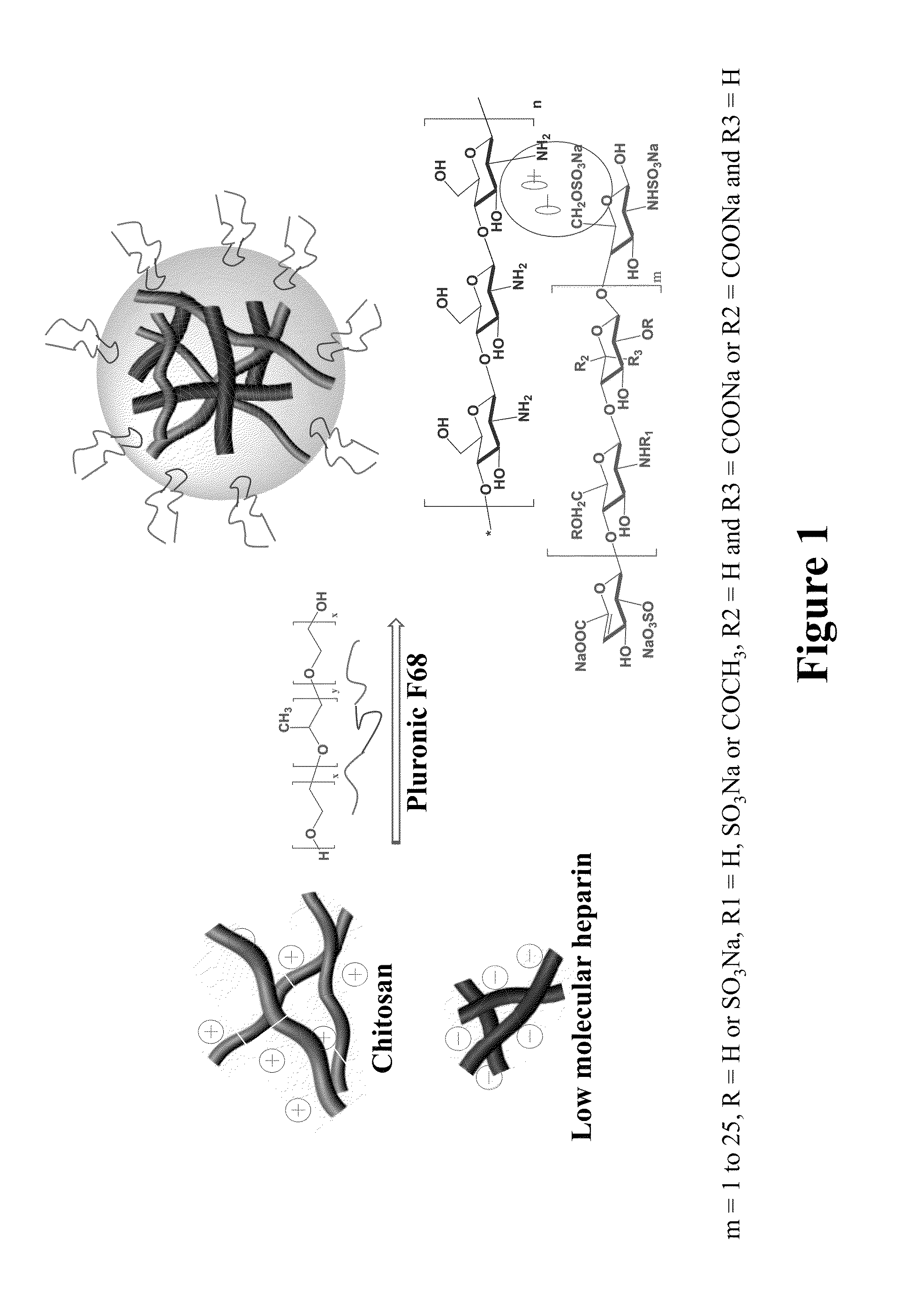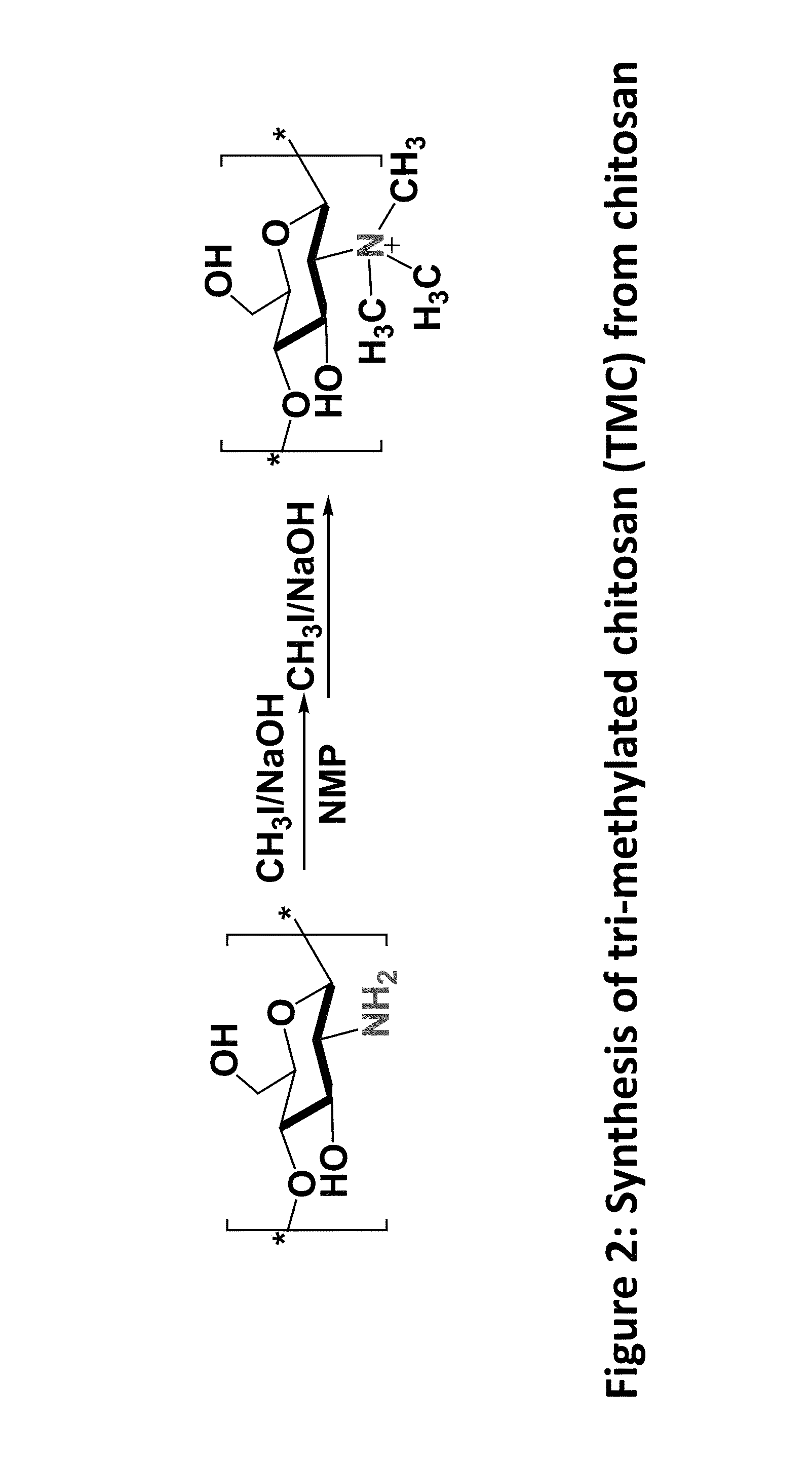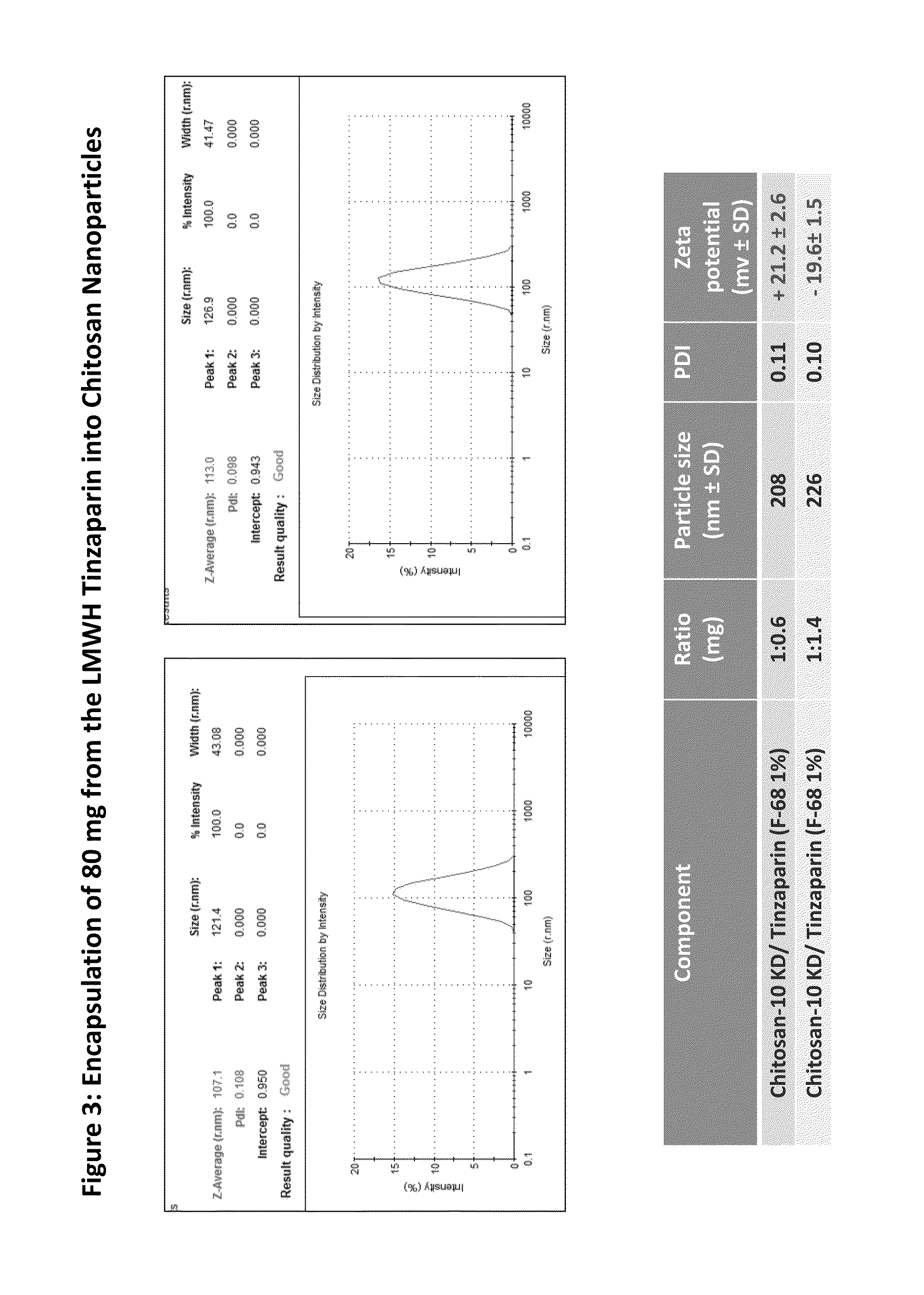Compositions and method for Anti-sickling of red blood cells in sickle cell disease
a technology of sickle cell disease and red blood cell, applied in the direction of nanocapsules, organic active ingredients, capsule delivery, etc., can solve the problems of disproportionate health care cost of scd patient management, decrease of rbcs flexibility, and risk of various complications
- Summary
- Abstract
- Description
- Claims
- Application Information
AI Technical Summary
Benefits of technology
Problems solved by technology
Method used
Image
Examples
example 1
Preparation of Nanoparticles
[0054]In a typical experiment, 30 mL of a solution of the LMWH Tinzaparin or SNACH (2 mg / mL in deionized water) was added drop by drop to 50 mL of 2 mg / mL chitosan or methylated Chitosan (Example 2) solution with constant ultrasonic. Then pluronic F-68 (1% W / V) was added mixed by shaking and followed by being homogenized for 30 seconds using ultrasound sonication (200 W) (Table 1). Ionically formed Nanoparticles are then further covalently bonded using EDC for sustained and extended release of LMWH or SNACH (see FIGS. 1-6).
example 2
Synthesis of Tri-Methylated TMC from Chitosan
[0055]200 mg of chitosan and 0.48 g of sodium iodide were added to a mixture of 10 ml of NMP (N-Methyl-2-pyrrolidone) and 1.2 ml of 15% w / v aqueous NaOH solution. Subsequently, the mixture was heated to 60° C. and after stirring for 20 min, 0.6 ml of methyl iodide was added and the reaction mixture was refluxed for 60 min. To synthesize TMC with a DQ of around 40-50%, 0.6 ml of 15% NaOH solution and 0.3 ml of iodomethane were added and the solution was stirred for another 60 min before stopping the reaction.
TABLE 1Nano composite of Ionic complex of the LMWHTinzaparin and Chitosan NanoparticlesParticleZetaRatioSizesPotentialComponents(mg)(nm ± SD)PDI(mv ± SD)Chitosan-10k / Tinzaparin 1:0.381480.18+32.9 ± 2.6(F-68 1%)Chitosan-10k / Tinzaparin1:0.62140.14+30.2 ± 2.6(F-68 1%)Chitosan-10KD / Tinzaparin1:1 2140.11+21.2 ± 1.7(F-68 1%)Chitosan-10KD / Tinzaparin 1:1.052630.15 +19 ± 1.5(F-68 1%)Chitosan-10KD / Tinzaparin1:1.14740.18+12.3 ± 0.9(F-68 1%)(unsta...
example 3
Freeze-Drying of Nanoparticles
[0057]Mannitol (5% W / V) was added to the solution as a cryprotectant to preserve the particle properties during freezing step. Then the solution was then lyophilized to get the nanoformulation in powdered form for further use (see Table 2)
TABLE 2Freeze-drying of the LMWH Tinzaparin / Chitosan or Methylated Chitosan nanoparticlesAfterfreeze-dryingRatioParticle sizeZeta PotentialComponents(mg)(nm ± SD)PDI(mv ± SD)Chitosan-10 KD / Tinzaparin (F-68 1%) + 5% Mannitol1:0.382560.17+30.6 ± 2.4Chitosan-10 KD / Tinzaparin (F-68 1%) + 5% Mannitol1:0.63110.20+23.1 ± 1.8Chitosan-10 KD / Tinzaparin (F-68 1%) + 5% Mannitol1:1.42990.11−21.7 ± 1.7Chitosan-10 KD / Tinzaparin (F-68 1%) + 5% Mannitol1:1.62820.14−23.8 ± 1.9Chitosan-10 KD / Tinzaparin (F-68 1%) + 5% Mannitol1:23150.15−29.0 ± 2.3Chitosan-10 KD / Tinzaparin (F-68 1%) + 5% Mannitol1:33020.13−30.7 ± 2.4
PUM
| Property | Measurement | Unit |
|---|---|---|
| Mass | aaaaa | aaaaa |
| Mass | aaaaa | aaaaa |
| Size | aaaaa | aaaaa |
Abstract
Description
Claims
Application Information
 Login to View More
Login to View More - R&D
- Intellectual Property
- Life Sciences
- Materials
- Tech Scout
- Unparalleled Data Quality
- Higher Quality Content
- 60% Fewer Hallucinations
Browse by: Latest US Patents, China's latest patents, Technical Efficacy Thesaurus, Application Domain, Technology Topic, Popular Technical Reports.
© 2025 PatSnap. All rights reserved.Legal|Privacy policy|Modern Slavery Act Transparency Statement|Sitemap|About US| Contact US: help@patsnap.com



